NEW YORK - Approximately 3,075 weary but happy India-Burma troops arrived in New York this week aboard the USS General Greeley after a 28 day trip from Calcutta. The men, women - and two babies - who sweated out the Land of Mystery, were greeted hilariously, especially by the afternoon newspapers.
Both the World-Telegram and the Journal-American printed huge three-column pictures of
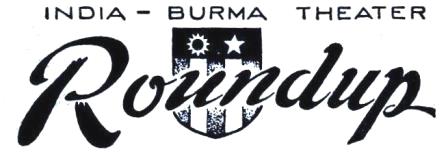
|
Also aboard the Greeley were representatives of such honor roll groups as the 332nd Engineers, who contributed greatly to the Ledo Road; the 61st Railway Operating Co., who operated 700 miles of railway in the Assam Valley; the 478th and 21st Quartermaster Corps.; the 48th Evacuation Hospital; the 20th General Hospital; and the 151st Medical Battalion.
The troops made a colorful - though not exactly military - scene as they bustled off the transport, some wearing fezzes, some carrying three-foot long knives, all looking thoroughly pleased with the world in general. Red Cross and Army Nurses added to the gaeity, while some Indian and Chinese civilians were living reminders of Asia whence the Americans had come.
One happy returnee was S/Sgt. C. S. Abel, who conscientiously carried his six-month-old son, William Hugh, who was born in New Delhi. Another was Mrs. William F. Baker, wife of S/Sgt. Baker, who proudly held her baby, Mary Louise. The Bakers were also wed in New Delhi.
Gen. Terry Promises Greatest Speed In Shipping I-B Personnel To States;
Asks Co-Operation Of 'Essential Men'
The India-Burma Theater will adhere strictly to War Department policy and directives in getting men out of the Orient and sending them home for discharge, stated the new Theater Commander, Maj. Gen. Thomas A. Terry, in an interview with the Roundup this week.
The energetic-acting direct-talking Alabama-born Theater Commander stated without equivocation that he knew the primary thought in men's minds out here was getting home.
"In fact," he humorously commented, "everyone seems to want to get out of the Army in 24 hours. I can only say that we will retain the least number required to wind up the Theater's affairs in the shortest possible time.
|
"In my experience in the Army, I have found that the American soldier will do anything if he understands the necessity for the action. He resents an arbitrary action or order. I would like to point out to the men who have to remain here for a time that they are as essential now and in the future as they were during the war.
"It is admittedly a hard point to get over. But we must remember that we have equipment and property out here belonging to the U.S. We cannot liquidate these affairs overnight. We cannot pull out and leave them behind unguarded. It is in the interests of Americans to protect their own property. It was taxation from their own relatives that helped to pay for it. I therefore ask every man who has to remain here until he is eligible for discharge to consider this problem and realize how much his country needs him."
TO TAKE TOUR
Gen. Terry said that although he was familiar with the work of the men in this Theater and what he termed the "miraculous" accomplishment of a supply line to China, he would have to wait until he had taken a tour throughout the installations here before commenting on his impressions. He hasn't set any date for his tour but plans it for the immediate future.
As head of the Second Service Command, with headquarters in New York City, he had one of the most responsible commands in the continental U.S. We asked him if he had not been responsible for the famous "dimout" of New York City.
"I believe it was referred to as the 'infamous dimout' in some circles," he wryly answered. "I was deluged with letters. But once the people realized that it was essential to protect shipping coming into the harbor, cooperation was complete."
2,000 WAR PLANTS
More than 18 percent of all the men and women inducted into the Armed Forces were signed up in the area covered by the Second Service Command. And it's an old axiom in a civilian Army that generally what goes in, comes out. So it can be seen that the General must have deactivated a proportional number prior to his assuming command here.
With all the disbursements paid out in his command, the General was responsible for about seven and a half billion dollars annually. There were more than 2,000 first priority war plants in the Second Service Command.
"I realize that with you men out here so far from America you probably didn't get a very clear picture of the operations of a Service Command," the General said. "It was a perpetual turnover. When the War Department ordered every physically fit man overseas it meant bringing in a vast number of inexperienced recruits and re-training them for jobs that were vitally important.
"We had two redistributions centers at Lake Placid and Atlantic City. Here returned overseas men, including, of course, soldiers from the Orient, were allowed two weeks of the best food and living accomodations. They were also allowed to bring their wives there at a nominal cost. I took a great deal of interest in these places, trying to see that the men got the best available."
Although the General was born in Alabama he hasn't much of a Southern accent. In fact, at the risk of heresy, we could almost say that he had acquired a slight New York intonation during his past four years in the metropolis.
And if he stays out here as long as some of us have he will probably go home saying teek, malum and other accompanying wordsa just as naturally as we do. But based on his record and the general impression he gives, he will complete deactivation out here with speed, energy and efficiency.
3,000,000 Men Out By Dec. 25
Out of an estimated 8,000,000 troops in the Army as of V-E Day only 1,000,000 will still be in uniform by the latter part of July, stated newly-appointed Secretary of War Robert P. Patterson this week.
Patterson estimated that 3,000,000 will be discharged out of this total by Christmas. The Department also announced that within a seven day period last week, 139,000 men and women were discharged. This makes a total of 995,000 discharges since V-E Day.
Patterson explained that by July the total strength of the Army will have been cut to 1,600,000 through the discharge plan. He estimated that 1,000,000 will be from the men in uniform as of V-E Day, with the remainder filled from the draft and volunteers.
he said that 350,000 men monthly are being shipped home from the ETO and that demobilization movements are progressing in the Pacific. From Tokyo the Army announced that 1,490,000 will be shipped home from the Pacific in the next seven months. It was stated that 725,000 are eligible during the next four months.
Congressional criticism of the Army discharge plan had died down this week. The legislators seemed to be satisfied. Rep. Andrew F. May (D-Ky.) chairman of the House Military Affairs Committee, stated the Army was doing its best.
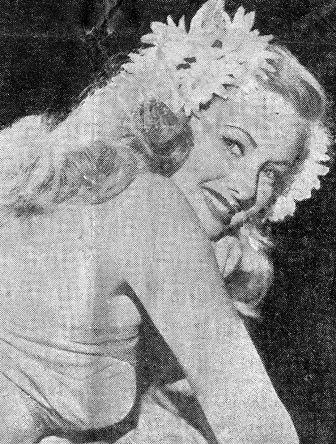 Formerly a secretary for a Hollywood talent agency, lovely Jane Harker has been "discovered" by Warner Brothers.
She can be seen in Night and Day. Which strikes us as being a very excellent suggestion.
Formerly a secretary for a Hollywood talent agency, lovely Jane Harker has been "discovered" by Warner Brothers.
She can be seen in Night and Day. Which strikes us as being a very excellent suggestion.
|
WITH NEW COMMAND
Theater Commander, Maj. Gen. Thomas A. Terry, has issued the following greeting to the officers and men of his new command:
"I am honored to succeed such illustrious theater commanders as Gens. Stilwell, Sultan, and Wheeler, and to assume command of the gallant men and women of the India-Burma Theater, for you have all made a great record and an important contribution to the Allied victory.
"What you did here, working over brutal and disease-ridden terrain at the end of the world's longest supply line will never be forgotten by a grateful nation. Your construction of the road, the pipeline, and wire communications to China, and your daily battles with the treacherous Hump will always be remembered by a proud people. And the memory of your loyalty, courage, skill and determination will serve as an ever-replenishing source of inspiration of a great country.
"The cessation of hostilities has solved most of our old problems, but it also has created many new ones. We must realign our sights, make proper adjustments, and face the facts whatever they may be. This theater is now in the process of inactivation. I shall continue the policy of my predecessor, Gen. Wheeler, by sending men home with the greatest possible speed.
"Naturally, some of you men will have to handle this vast exodus and others must remain to wind up the theater's involved affairs, but I will keep only the minimum number required to do the most efficient job in the shortest time.
"If you are one of the most fortunate men and are scheduled to leave in the near future, do not get impatient. We are making every effort to get you home as soon as possible. If you are one of those who must stay here a while longer, I am sure you will appreciate the circumstances that make it necessary, and will continue to do your important job to the best of your ability."
CHINA G.I. GETS LIFT IN HURLEY'S PLANE
MALDEN, MASS. - UP - Cpl. george Rauseo arrived at the bedside of his dying mother this week after a 10,000-mile race against time from China - a race made easier when he hitched a ride with Ambassador Patrick Hurley.
Rauseo's mother has been in a critical condition for several weeks since being struck by an automobile.
The trip took four days, 19 hours, 45 minutes.
Returnee Describes Ledo Troop Train Ride
500 men Make Trip In Eight Days
KARACHI - Day after day a happy scene is re-enacted as hundreds of jungle troops from outer Assam and Northern Burma leave Ledo by rail for India's west coast port of Karachi. This correspondent, who has sweated out the mud, monsoon, and monotony of the forward areas for more than two years, was given as his last assignment the job of covering one of the first mass movements by train across the top of India to a waiting boat at Karachi.
It's a tough trip by all odds, but in comparison to the troops trains that most men endured on their way to Ledo and points beyond, it's a kid's picnic. Griping and grousing is mitigated by the realization that this is the last ride on an Indian railroad.
Approximately 500 troops daily are leaving Ledo on special trains that take men over a route never before used in reaching the Arabian seaport of Karachi. From the whistle stop Margherita station, the route follows the Bengal and Assam Railway to Pandu on the banks of the swift flowing Brahamaputra River. Here the men de-train, board a ferry to the other side at Amingaon, where they take the second train over the meter-gauge track. From there the roadbed winds within sight of the Himalayas, and heads westward for Lucknow, high spot of the trip where a change to the wide gauge line is made.
EDGE OF DESERT
From Lucknow the train points northwest to within a few miles of Lahore, then veers sharply southwest, skirting the edge of the great Sind Desert to Karachi. The entire trip covers almost 2,500 miles and is being made in approximately seven days.
Men over 35 and those with sufficient points to warranttheir return home are included in the shipments by rail, but the preponderance of troops is those assigned to units declared surplus and being returned home for demobilization or reassignment. Among the first to leave were soldiers of the 1st Convalescent Camp, 1037th Engineer Gas Generating Unit, 20th Medical Depot, 699th EPD Company, 48th Evacuation Hospital, 382nd Engineers, 352nd Engineers, and the 428th Signal Construction Battalion.
Following is a day-to-day account of the seven-day ride across the flat lands of India as recorded by this correspondent.
First Day - Troops were brought from the Staging Area to the train side at Margherita Station. Music, magazines and books were provided by Special Service, and coffee and doughnuts by Red Cross gals. G.I.'s to the last, they shouted, waved, sparred around, shook hands, made rash promises to meet at Joe's Bar in 1943 and boarded the train with such comforts as could be scrapped up for the long rail trip. At 10 a.m. the train pulled out.
CASUALS JOIN
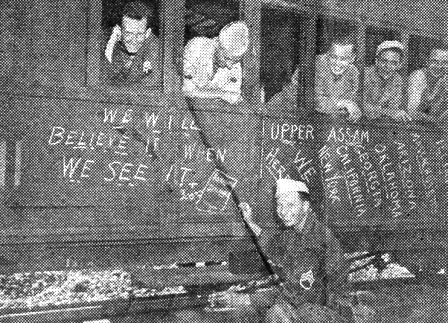 Forward area men bound for Karachi and points towards America. A skeptical G.I. writes on the side of the first train
from Ledo, "We'll believe it when we see it."
Forward area men bound for Karachi and points towards America. A skeptical G.I. writes on the side of the first train
from Ledo, "We'll believe it when we see it."
|
About 1 p.m. we arrived at Tinsukia where several casuals joined the group. Most over-age men, they had been sweating out plane rides at Chabua. Among them, T/4 James A. Croscup, Baltimore, Md., a former cab driver, had only one thought in mind: To get home to his wife "Punkin" and start back in the cab business again.
It rained incessantly through the thick jungle country and the men prepared meals of K, C, and 10-in-one rations. Though crowded, they took it well and soon hastily-made signs appeared on the sides of the train. "Homeward Bound," Burma Bums," New York, here we come," and several variations.
Sleeping was difficult because of crowded conditions, but with typical G.I. ingenuity, the men found places on the seats, bundle racks, and floors to tide them over the night.
Second Day - By moring the train had reached the Manipur Road section where only a little more than a year ago Jap troops had threatened to cut this vital rail line to our troops in Assam and Northern Burma. Winding past the dank, thick jungles, the train arrived in Pandu, crossing point of the Brahamaputra River shortly after noon. Infallible reminder that we were still in India were the Oriental style latrines, both aboard the trains and in the stations.
SEE NAVY MEN
The jungle wallahs, some of whom had driven the Ledo Road many times, found a party of Navy men on their way forward to convoy equipment by truck over Stilwell Road to China and gave the gobs a royal send-off on their mission. The train change and ferry trip took approximately six hours, during which time the men had an opportunity to chow up and obtain coffee and sinkers from the Red Cross girls who arrived on the scene. Groups retired to shower, shave and make arrangements for the second part of the trek while others whipped out decks of cards to while away time. About 6 p.m. the train left Amingaon Station and journeyed across fresh green lands almost within soght of the Bhutan border.
Third Day - Just before 7 a.m. we reached Parabatipur where hot water was available for shaving and ice provided for cool drinks. The train was there long enough for the men to wash, stretch and get set for the next part of the trek. T/4 LeRoy C. Miller, Bronx, N.Y., member of the 48th Evac. Hospital discovered he was married 10 years but found nothing with which to celebrate.
Raincoats were doned as the roofs of cars leaked from constant monsoon rains. The roadbed was like a vast causeway as the train crossed the inundated Ganges River Valley. Telephone poles were up to the cross beams in water. Tree tops jutted out of the swirling muddy waters.
RELIGIOUS SERVICE
During mid-morning at Katihar, Father Harland J. Davis, Meadville, Pa., Catholic Chaplain of the 48th Evac. Hospital held mass for the troops in the waiting room of the station. Mansi and Barauni, both small towns along the route, were passed, but only after frequent stops were made to water the locomotives which puffed under the weight of the long troop train. At dusk, we were still passing flooded lands and occasional villages on high ground to which Indians were poling their way in boats or wading through waist-deep water.
Thoughts Of Home Reduce Griping
Fourth Day - Ahead of schedule we awoke to find our train had been in the station at Sonepore sonce 12:30 the night before. The rain continued throughout the day, though we reached higher ground and endless lines of rice paddies in all directions.
At each watering point, G.I.'s dashed off the train for a quick stretch, to buy fruit or engage in talk with Indians. Though ours was one of the first trains to travel this route, hundreds of Indian kids lined the tracks with the old cry of "Baksheesh." Men talked of home, what they would do when they hit the States, aired their tastes in civilian clothes and always wound up on the same inevitable subject - women.
TALK OF HOME
Cpl. Sherwin Lando, Hudson, N.Y., a Public Relations non-com from Ledo, made mouths water with his descriptions of juicy charcoal-broiled steaks, New York night spots, and how he would greet his wife and son after his two-year absence. T/Sgt. Walter H. Rowland, Patchogue, L.I., N.Y., a former butcher and mess sergeant in Advance Section for more than 29 months, divulged the inner secrets of the meat business.
Troop Commander of the train and CO of the 48th Evac. Hospital, Col. Herman A. Jacobson, Chicago, Ill., had a minimum of difficulty with the jungle jollies. Roll call was unnecessary. Nobody dared miss this train.
At 5 p.m. the train arrived at Gorakpur, a clean railroad town on the Tibetan border. During a two-hour layover, men had an opportunity to shower and clean up at a station-side bath. British women volunteers served tea and cookies. Men raced to the engine, as at all stops, to secure hot water for coffee.
At 8:30 p.m. the tired, weary men were treated to an Indian dance at Basti. All along the line in this section the Indians were extremely friendly and eager to make the trip lighter for the American troops.
FIRST-CLASS STOP
Fifth Day - Lucknow, mid-point of the journey and important rail center of North Central India, was reached at 6 a.m. At the juncture of the meter-gauge and wide-gauge railways. Lucknow's RTO Commanding Officer, Lt. Col. Kenneth C. McCausland, organized a first-class rest stop in a matter of a few days.
At a mess hall erected on the station platform, we were treated to a breakfast of toast, coffee and fruit juice. Dinner, served from the same kitchen, consisted of fresh beef, potatoes, peas, dessert and drink.
The Red Cross had set up tables for writing and provided magazines and books as well as conducted tours of Lucknow for the troops. British women volunteers operated a canteen where eggs, bacon, and coffee were available and souvenirs, fruit, and other wares were sold by Indians in the station. Candy, ice cold fruit juices and cigarettes were on sale for the troops.
Showers and wash rooms were provided for the men and the hours were spent in cleaning up and making ready for the change-over to the wide gauge trains waiting on another track.
Bags were carried by coolies from one train to the other and men assigned to cars so that there were sleeping accomodations for each man. Eight cans of beer were sold to each G.I. and ice put aboard the cars. Smart and snappy in colorful uniforms, British soldiers of the Lancashire Fusiliers, one of the several British bands to send off American troops at this station, marched the length of the platform playing martial airs.
G.I.'s spoke of the hospitality displayed here and Col. McCausland, eager to give the troops everything possible, admitted he's had more genuine salutes, full of meaning and appreciation than at any time in his Army service.
WIDE GAUGE
leaving Lucknow in the late afternoon, the wide-gauge train proved more spacious and commodious than previous accomodations. Travelling northwest through the level country of United Province, monkeys scurried over village roof tops, ambled toward the train as stops were made along the way. Just before dark, we arrived at Shahjahanpur, named after the renowned Mogul emperor, builder of the famous Taj Mahal at Agra.
Sixth Day - The train made excellent time during the night and at 9:30 a.m. we arrived at Ambala Cant. Camels appeared as beasts of burden and the first signs of dry desert country came into view.
Shortly after noon, ice was taken aboard the train at Jull-under Cant and again at Amritsar in the late afternoon. The air grew hotter, the country more arid as we progressed farther into the sandy land.
Travelling as casuals, three Negro soldiers, S/Sgt. Ronald Battle, New York City; Cpl. Robert D. Scott, Los Angeles, Calif.; and T/4 Eugene M. Drake, Nashville, Tenn., all veterans of the Stilwell Road, grinned as they counted the stations going by, realizing that each was bringing them closer to Shangri-La. Scott, with three trips over the Road to China, and Drake with two to his credit, were "point men" and felt the journey was a breeze compared to their experiences in the jungles of Burma.
ENGINEER HAS DATE
Asked about the time we would reach Lahore, the Indian engineer, wise in G.I. lingo, stated that we would not enter the city, but would turn off at Lahore Cant about four miles from the town. As to the time, he quickly countered by saying, "I'll have you there before dark, as I have a cinema date at nine o'clock.
Seventh Day - From Lahore Cant, we headed southwest and by 8:30 a.m. pulled into the station at Samasata, on the northern edge of the great Sind Desert. Hot winds blew across the sands, and vegetation was scarce. Engines were changed and additional ice put aboard.
Camel caravans appeared on all sides carrying heavy loads at a snail's pace. Hundreds of long-legged, gazelle-like goats with huge ears took off across the plains, leaving a trail of dust. Locusta by the millions, aroused by the chugging locomotive, darkened the sunny sky as they scattered from the train's path.
Before dark, Rohri, an oasis in the desert, was reached, situated near the Indus River.
Eighth Day - From Motri on the west bank of the Indus River the train roared across the flat, dry desert. Before noon, the huge hangar of Karachi Air Base, on the edge of the Malir cantonment, came into sight. Just a little more than seven full days from Ledo, the troop train carrying more than 500 men was shuttled to the huge processing center at Malir, 18 miles from Karachi, where the men detrained and were taken by trucks to barracks assigned to them.
Picture Of Calcutta Epic Unveiled Under Vast Canopy Of Figures
CALCUTTA - Dazzling figures in tonnage, handled through the King George Docks, nerve center in the world's longest supply line, reveal the first and unbelievable picture of operations and efficiency in the war effort extended in the India-Burma and China Theaters of war.
Sgt. Scott Harris, Jonesboro, Ark., member of the 497th Port Battalion, who spent two years on the keyline at shed No. 3, summarizing the successful operations and speed of discharging cargo at the docks, asserted, "Effiency? Hell, we went down the Hooghly to meet the boats!"
Supplies, from a PX, tooth brush to heavy equipment, planes and gasoline which were channeled through this port, totaled 2,582,937 long tons - a supply figure that was responsible for driving the Japs from Northern Burma, for the construction of the Stilwell Road, the air bases, engineer construction feats, and the essentials in troop maintenance.
The tonnage figure, in pounds, staggers the imagination, considering that 5,795,779,780 pounds of equipment and supplies flowed through the Calcutta port in three years.
NUMBER ONE PORT
Ranking as the number one port in all theaters in gross and net cargo discharge from October, 1944, according to a report published semi-monthly by the Chief of Transportation in Washington, D.C., the King George Docks first had U.S. equipment steaming into its tidal basin in October, 1942. In the following four months 9,000 tons of cargo, consisting mostly of set-up vehicles and general troops cargo, were shipped here from Karachi. This marked the beginning of operations in Calcutta, despite the dangerous waters infested with Jap submarines, which made shipping difficult in the Bay of Bengal.
In February 1943, U.S. Army officials, with the green light from Naval authorities, decided to open the port of Calcutta as a major port for entry of supplies to the then-called China-Burma-India Theater. The 540th Port Company arrived in Calcutta from Karachi on March 15, 1943 in time to unload the USS Thomas Johnson. This was the first vessel completely loaded by military personnel, and also the first vessel in the port to be unloaded under port company supervision.
In all, three ships - two Army transports and one commercial ship - unloaded 14,410 long tons of cargo in March. This marked the beginning of the vast operations that soon were to make Calcutta the lesding port in the theaters of war.
TEMPO INCREASE
The tempo of ship movement rapidly increased to eight, 13, 15, 22 and so on during the following months. For 12 months the port continued to discharge cargo and work under the handicaps of inadequate vehicles, "green" personnel, the heat, filth, mosquitoes, and inadequate equipment.
Negotiations were underway with the British by this time to turn over KGD in its entirety to the U.S. Army. The Army took over the port for complete operations on March 1, 1944. By contract, the rental cost on reverse lend-lease is approximately Rs. 152,000 ($44,600) per month. A port directorate was set up with a deputy director representing the American interests.
Tonnage figures surpassed the 100,000 mark for the first time in February, 1944, when 128,396 long tons were discharged from commercial and Army ships in the King George Dock and Kiddapore dock berths. A total of 26 ships were brought up the Hooghly River, that being the highest number of vessels carrying Army cargo up to this time.
With the exception of five months in the next 18-month period the cargo discharged was well over the 100,000 long ton mark each month. The number of vessels arriving increased monthly, reaching an all-time high in March 1945 - 30 commercial and 36 Army transports entered port.
By the end of August, 372 commercial and 304 U.S. Army transports had discharged cargo at the Port of Calcutta. By 1945 the steady progress in operations and efficiency had reached its peak at the King George Docks. From the average turnaround time of eight days in the basin, the time was lowered to an average of three days.
The record month for the Port of Calcutta was March 1945, when 175,893 long tons were discharged. The record for an individual ship was July 28 when the USS Alden Besse was unloaded in 30 hours with a complete turnaround time of two days.
OPERATIONS DEVELOP
As the port grew, so operations developed. In the middle of July '43 , two platoons of the 541st Port Company arrived to help solve the acute labor problem. In August a third platoon joined the dock personnel, having been called in from work on the Ledo Road. These platoons arrived completely equipped with the most modern equipment from the U.S.
The first operational equipment arrived in December and it was the first time that a fork lift had been seen at the King George Docks. Also precious on the equipment list were five-ton crawler cranes and two floating cranes of 30-ton capacity.
The India-Burma campaign as well as the supply line to the China Theater can well be realized in the operating cost of the port. During operations the cost was 22 lakhs ($66,577) per month for minimum essentials, such as barge hire, barge charges and labor. This however, did not include the upkeep of Army personnel operating at the docks, nor did it include railway freight nor expenditures for upkeep of operations of the numerous trucks to haul freight from the docks on a round-the-clock schedule.
LABOR HELP
nearly 1,000 men and officers put an end to the acute labor problem when the 497th and 508th Port Battalions were assigned to the docks. Working a 24-hour schedule, the personnel acted in supervisory capacity, directing labor and in some instances operating dock equipment. Some 3,500 coolies were employed.
The port battalions worked three shifts - the day, swing and graveyard. Cargo from the sheds was discharged as fast as it was moved in.
Typical speed with which cargo moved through the KGD area in the month of August was observed when more than 116,954 long tons were discharged from the boats. Via truck, rail and water, 106,392 tons were shipped to SOS depots, 2,235 tons to the Air Corps, and more than 7,000 tons to miscellaneous stations in Bengal during the same month. Only two hundred tons of local supplies were kept in the dock area more than 10 days.
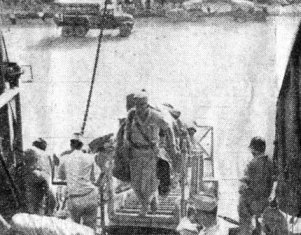 The first of 3,000 troops comes up the gangplank at the Karachi Port of Embarkation.
The first of 3,000 troops comes up the gangplank at the Karachi Port of Embarkation.
|
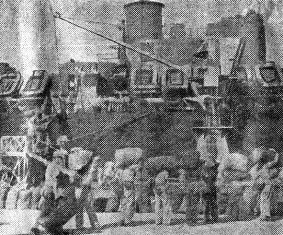 Homeward bound soldiers lift their duffle bags and step in line to board the General MacCrae, first troopship
to leave India for the 21-day voyage to the U.S. coast.
Homeward bound soldiers lift their duffle bags and step in line to board the General MacCrae, first troopship
to leave India for the 21-day voyage to the U.S. coast.
|
Embarking For Home Fast, Smooth Process
KARACHI - Before daybreak Sunday the first contingent of homeward-bound G.I.'s had scrambled up into the waiting 6x6's with their barracks bags and the big trucks began rumbling out of 86-square-mile Camp Malir toward the Karachi docks, 18 miles away.
By mid-afternoon the third 50-truck convoy from Malir reached the East Wharf with the last of 3,100 passengers for the squat, gray troopship, the General Morton, which had docked at Karachi 36 hours previously.
At 7 o'clock Monday morning, as the sun nudged up above the jagged gray hills of the Sind Desert, the Morton eased out of the harbor, and hundreds of soldiers and nurses crowded at the railings for a last look at India before the gleaming white buildings of Karachi faded into the early morning fog.
Passengers aboard the Morton - second troopship to leave Karachi since war's end - came from stations in India, Burma and China. There were O.S.S. men with long service behind Jap lines in Burma and China, Negro truck drivers and engineers from the Ledo Road, Mars Task Force infantrymen, nurses from jungle hospitals in Assam and Burma, three WACs, 21 Canadian troops, and 16 war dogs from the Burma K-9 Corps.
HARD TO BELIEVE
After "sweating out" their ride home on the Morton anywhere from one to three weeks, the G.I.'s filing up the gangplank of the ship Sunday still found it hard to believe they were finally "on the road back."
From 9 o'clock Sunday morning until 4 o'clock in the afternoon they moved out from the shade of a long loading shed across the docks to the gangplank. Here, one by one, their last names were called and they replied with their first names as they passed on up to the ship's deck with their barracks bags on their shoulders.
Once on board, they were led to their quarters - large rooms jammed with canvas bunks tiered four high. The sleeping quarters were hot and gave promise of miserable days on the Red Sea, but the men didn't gripe. As S/Sgt. Richard A. Doberstein of Medina, N.Y., veteran Chinese Combat Command instructor, summed it up: "What the hell, the ship's heading for home. I'm willing to stand up all the way."
INSPECT THE SHIP
After locating their bunks, the men started inspecting the ship which was to be their home for the next 21 days. What they discovered were the same accomodations which men leaving from karachi or Calcutta in the future will find on similar type transports: stall showers with both fresh and salt water, clean porcelain washrooms, broad stairways down into the ship, plenty of deck space with movies on the upper deck.
Their explorations halfway completed, the men began filing down into the mess hall. Trays, cups and silverware were provided, and their first meal of roast beef, baked potatoes, peas, breads and coffee conformed to a balanced diet which, according to ship's officers, would be followed throughout the trip. The enlisted men ate in a mess section equipped with chest-high tables at which the diners stood.
Limited space was provided for officers in the main dining room, but first and second lieutenants ate with the enlisted men.
Recreational facilities, including reading material, decks of cards and games, were available aboard ship. And, once out at sea, a PX stocked with cigarettes, cold drinks and, occasionally ice cream would be opened.
On only two occasions during the loading of the ship were there visible displays of emotion. With the docks crowded with men waiting to board ship in mid-morning, the loudspeaker aboard ship suddenly announced loudly: "Next stop for the General Morton will be New York harbor." The G.I.'s cheered and slapped one another on the back and Pfc. Edmund P. Mallamo of Brooklyn told Pfc. Willie P. Toles, QM truck driver of Birmingham, Ala., "Hear that boy, hear that! This tug's takin' me right to my own backyard."
Later in the afternoon, as the nurses climbed off the trucks on the docks the G.I.'s aboard ship
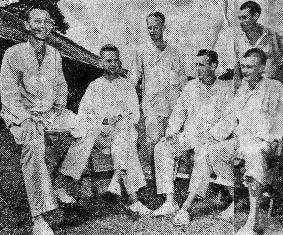 Safe and on the way to renewed health again, these six members of the 131st Texast national Guard Field Artllery
Battalion happily pose for a picture at the 142nd General Hospital in Calcutta shortly after their release from Jap
prison camps. The liberated Lone-Star Staters abover are, sitting left to right: Lt. Isaac A. Morgan, Jr., Maj. Wnthrop
H. Rogers, Lt. J. B. Hein, Cpl. B. D.Filimaore; standing left to right: Capt. Charles A. Cates and Pvt. J. W. Smith.
Safe and on the way to renewed health again, these six members of the 131st Texast national Guard Field Artllery
Battalion happily pose for a picture at the 142nd General Hospital in Calcutta shortly after their release from Jap
prison camps. The liberated Lone-Star Staters abover are, sitting left to right: Lt. Isaac A. Morgan, Jr., Maj. Wnthrop
H. Rogers, Lt. J. B. Hein, Cpl. B. D.Filimaore; standing left to right: Capt. Charles A. Cates and Pvt. J. W. Smith.
|
G.I.'S HAIL WAC'S
After the last nurse had gone aboard, three enlisted WACs started up the gangplank. That was the signal for some G.I. to bellow lustily: "Hey, fellows here come some enlisted females. Give 'em a hand!" And the three WACs, pink-faced, sampered hurriedly aboard under a thunderous ovation.
The G.I. returnees, as the realization dawned that they actually were "on their way," could talk about only one thing - home. S/Sgt. Nevin S. Goodling of Jacobus, Pa., who had served with an Engineer depot in North Africa and Assam for the past 23 months, just shook his head and said, "I'll be mighty glad to see the wife and kids." (Goodling has four children - a gold mine of points).
Cpl. Edward Martin of Nashville, Tenn., assigned to ATC in Assam for the past 15 months, grinned broadly and said, "I swear there ain't no man gonna get this boy off this ship 'til we hit New York."
'STILL A LOOIE'
S/Sgt. Leonard A. Peterson of Chicago, Air Corps mechanic with 34 months overseas service in the Aleutians and Burma, and Pfc. William V. Gorman of St. Louis, both of whom had been taken off the shipping list of the General MacCrae, first ship to leave Karachi a week ago, said: "We've got our fingers crossed - and how!"
Nurse Lt. Ruth J. Compton of Waterloo, Ill., said, "Well I'm on my way back home, but now have to sweat out my fiance's return." Her fiance, Lt. Wallace L. Criswell, is a pilot with a troop carrier squadron in China.
Nurse Lt. Pauline Hendershot of Crystal Springs, Pa., with 21 months in Burma, was glad to be on her way home; but as ahe started up the gangplank, pointed out: "I hope you've noticed I'm still a second lieutenant."
PRAISE GIVEN ARMY RADIO
India-Burma personnel going home are loaded with souvenirs from Gurkha knives to pink elephants, but members of the Armed Forces Radio Stations in this Theater are saving letters.
The letters, oddly enough, are mostly from non-Americans, ranging from a request for boogie-woogie to one desiring to hear Father Divine.
The letters, however, all have one thing in common. That is praise for the programs put on by the G.I. stations. This week we are reporting one letter that is typical of the generosity of the praise ladled out by the civilian listening public here to the American G.I. radio wallahs.
Since the writer addressed it to one of the enlisted announcers at the station we don't know if the writer wanted her name used for publication, so we will allow it to remain anonymous. It reads as follows:
"I want to thank you and your friends at the station, for the pleasure you have given to thousands, including me, by brightening up the air. To say that you people will be missed when you go off the air is putting it mildly. There will be a big void which nothing will fill.
"This war was a hideous happening but if it had not happened we might not have had the pleasure of meeting Americans. It has really been grand knowing you all.
"Nothing has struck me so forcibly as the big and generous way Americans do things. Their smallest gesture has such a big meaning and such far reaching effects. You unselfishly give of and share your ideals so that anyone may benefit.
"Every time we hear or read of you Americans going back to the States, and it is selfish of me to say it, I hate the thought of your going. I wish to say good-bye and God bless you all, and I hope that one day I will be fortunate enough to see that wonderful country which turns out people like you."
3115TH SIGNAL OUTFIT 'KEEPS THEM TALKING'
SINGAPORE - The U.S. Army's 3115th Signal Service Company has, and still is, blazing the communications lines forward for the Southeast Asia Command.
The G.I.'s are now operating in Singapore, where they have established communications between SEAC headquarters at Kandy, Ceylon, and the headquarters here. They came here from Rangoon, where they did the same job after the British took over that city to climax the Burma campaign.
The Yanks landed here by sea in the advance party on Sept. 6 and the official surrender was not signed until six days later. At Rangoon they also went in early, with 14th Army units finding the G.I.'s setting up Signal equipment as they marched into the city.
In Rangoon the G.I.'s were assigned a house which had been stripped of furniture. The same situation faced them in Singapore. On both occasions the well-known American knack of collecting provided them with interior decorations that were on a par with those obtained by the burra sahibs of the British.
At the present time the boys are overloaded with souvenirs. Each individual would require a personal C-54 if he hopes to get even a part of his collection home. The men have had no PX supplies since May, with the PX officer at Kandy telling them he was not authorized to send supplies out of the island. However, a Roundup correspondent who stopped off at Ceylon found out that supplies are on the way by air.
Included in the Yank Signal wallahs here are the following: T/4 Tom Ashley, T/3 John Byrne, S/Sgt. Bernard Cave, Pfc. John Dickson, Pfc. Robaert Gallear, Pfc. Hengy Geils, T/4 Arthur Gray, T/4 Kenneth Kehoe, Pfc. John Provost, T/4 Charles Prunty, Pfc. Lester Roberts, T/3 Peter Walcott, T/5 Leonard Walker, Pfc. Bernard Zimmerman, T/5 Alf Hanson and Lt. Joseph Littlebeck.
Kill U.S. Officer In Saigon Revolt
SAIGON, INDO-CHINA - One American officer was killed and another seriously wounded in the attempt by local independence forces to gain control of the city from Allied occupational forces this week.
The officer killed was Lt. Col. Peter Dewey, son of Republican Congressman Charles Dewey of Illinois. Dewey headed the OSS group here. The wounded man was Capt. Joseph Coolidge of New Hampshire.
The casualties came after an eight-hour siege of the house used as U.S. Headquarters here, with at least three natives being killed by the defending Americans before the attackers gave up the attempt.
The continuing disorders have resulted in the house arrest of Count Juichi Terauchi, Japanese commander here. French forces and rebellious Annamite natives, partly armed by the Japs, have been fighting within the city. Estimates placed overall casualties at 304 lives, 100 of them French civilian. About 20,000 Annamites were said to be massed around Saigon.
In the meantime, British troops landed in Java where further revolts by independence elements were reported.
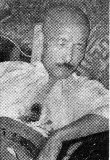 Gen. Hideki Tojo tried to lead Japan to victory. He failed. Caught like a rat, he attempted suicide. He failed again.
Above, the frustrated Nip is shown with a gaping, self-inflicted bullet wound just below the heart. American medical aid
saved his life.
Gen. Hideki Tojo tried to lead Japan to victory. He failed. Caught like a rat, he attempted suicide. He failed again.
Above, the frustrated Nip is shown with a gaping, self-inflicted bullet wound just below the heart. American medical aid
saved his life.
|
|
Able To Walk As former Japanese Premier Tojo recovered sufficiently this week from his attempted suicide to walk around his hospital room, news came that three of Gen. Jimmy Doolittle's Tokyo Raiders were crucified and shot by their Jap captors Oct. 15, 1942, in a Shanghai graveyard still red with the blood of a thousand slaughtered Chinese, Richard W. Johnson stated in a United Press copyright story. The execution of the three fliers was confirmed by the War Department this week and identified them as Lt. William G. Farrow, Lakewood, O.; Lt. Dean Hallmark, Dallas, Tex.; and S/Sgt. Harold Spatz of Lebo, Kans. Japanese war crimes prisoners are going to get a taste of real prison camp life, Lt. Gen. Robert L. Eichelberger, Eighth Army Commander, promised this week. |
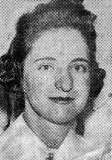 Though it is currently popular to punish war criminals, Lt. Rebecca Schmidt, ANC, recently had the unusual task
of saving the life of the worst Japanese criminal. She assisted in administering the life-saving blood transfusions
to former Premier Hideki Tojo after his attempted suicide in Tokyo.
Though it is currently popular to punish war criminals, Lt. Rebecca Schmidt, ANC, recently had the unusual task
of saving the life of the worst Japanese criminal. She assisted in administering the life-saving blood transfusions
to former Premier Hideki Tojo after his attempted suicide in Tokyo.
|
1106TH QM COM. AWARDED PLAQUE
JORHAT - The meritorious service unit plaque was recently awarded here to the 1106th QM Company, for "exceptionally meritorious service" at the forward air base of Tezpur in Assam, and at Bhamo, Burma.
Among the many duties performed by the company, part of the 301st Air Service Group, was the construction of a bakery at Tezpur. Made from salvage materials, it produced the first Stateside-type bread in that area for American troops.
Handicapped by a shortage of personnel, extra duties, and the adverse conditions of the area, the outfit has constructed many supply points, and serviced the scattered units of Assam and Burma. Operations in that area were begun in January of 1944.
LONELINESS FOR ARMY MAY AID RECRUITING
WASHINGTON - A suggestion that sheer lonesomeness for Army life might induce many servicemen to reenlist brought chuckles this week from a section of the House gallery occupied by G.I.'s.
It was made by Rep. Graham A. Barden (D-N.C.) during a debate on a volunteer enlistment bill.
Barden proposed that many men now in this country might be furloughed home for 30 or 40 days. He predicted: "Many of them would get lonesome for the Army and go back."
MARINES IN CHINA
TIENTSIN, CHINA - The veteran U.S. First Marine Division landed here in Northern China this week to aid the Chinese forces to disarm an estimated quarter million Jap troops in this part of the country.
The Roundup is a weekly newspaper of the United States Forces, published by and for the men in Burma and India, from news and pictures supplied by staff members, soldier correspondents, Army News Service, and United Press. The Roundup is published Thursday of each week and is printed by The Statesman in New Delhi and Calcutta, India. Editorial matter should be sent directly to Major Floyd Walter, Hq., U.S.F., I.B.T., APO 885, New York, N.Y., and should arrive not later than Saturday in order to make that week's issue. Pictures must arrive by Friday and must be negatives or enlargements. Stories should contain full name and organization of sender. Complaints about circulation should be sent directly to Capt. Drexel Nixon, Base Section, APO 465, New York, N.Y. Units on the mailing list should make notification of any major change in personnel strength or any change of APO.

OCTOBER 4, 1945
Original issue of Roundup shared by Virginia Dyer, widow of CBI veteran Stanley Dyer.
Copyright © 2006 Carl Warren Weidenburner
NORTH CHINA MARINE
TOP OF PAGE PRINT THIS PAGE ABOUT THIS PAGE SEND COMMENTS
PREVIOUS ISSUE CLOSE THIS WINDOW NEXT ISSUE
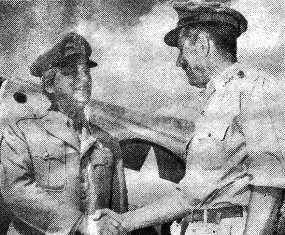 Maj. Gen. Thomas A. Terry, left, new Theater Commander, is greeted upon his arrival in New Delhi this week by Lt.
Gen. R. A. Wheeler, who has left to become Chief of Engineers.
Maj. Gen. Thomas A. Terry, left, new Theater Commander, is greeted upon his arrival in New Delhi this week by Lt.
Gen. R. A. Wheeler, who has left to become Chief of Engineers.